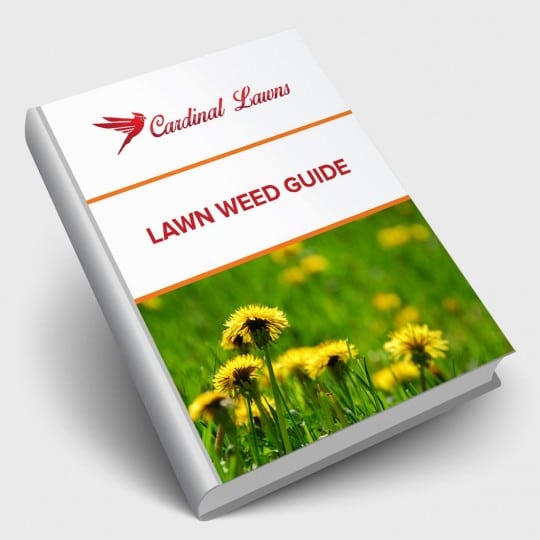Spring Weed Control Tips
What to Look for & How to Deal
Posted
April 8, 2021

Now that your grass is coming back to life, so are the weeds! Learn to identify the most common types across your lawn and take these spring weed control tips.
Spring Weed Control Tips
Not only are weeds unsightly, but they compete with your grass for water and nutrients. Controlling weed growth not only keeps your lawn looking clean, but it helps keep it healthy too. One of the best methods of stopping weeds from taking over your lawn is to help ensure your lawn is healthy and thriving. Proper maintenance, including watering, fertilizing, and mowing, is important. Even though your lawn may look perfect, there’s still a chance a weed could pop up unexpectedly.
There are certain products available that provide both weed control and fertilizer to your grass at the same time. Apply this product as a pre-emergent process before there’s too much of a problem popping up. However, some of these products only work on certain kinds of weeds. Make sure you identify what weed you’re dealing with and choose the best product to combat it.
Broadleaf Weed Identification
Identifying some of the most common spring weeds in your region is the first step toward controlling them. Most of these broadleaf weeds can be controlled using either a liquid or granular broadleaf weed control product.
Dandelion. Whether you see the yellow flower or the white puffy head, the only wish you should be making is NOT to blow the seeds across your lawn. A common identifier is the tooth-like serration on this broadleaf weed. Not only do these weeds grow fast, but they also spread easily too, especially when the seed heads blowing in the wind. Since it’s a perennial weed, they come back every season unless treated effectively. Don’t try to pull the weed up unless you use a tool that removes the entire root.
Chickweed. You may see the seeds of this weed as an ingredient in birdseed. So, if you use this type of feed, get ready to see this type of weed across your lawn where it may have been dropped. You’ll know it by its small white flowers and egg-shaped leaves. Look for it in shady areas where it can form a thick, dense mat across thinner grass.
Henbit. A member of the mint family, it has square stems and tiny purple flowers. It also appears in thinner areas of the lawn.
Clover. This perennial weed grows low but certainly not slow, as it quickly spreads across your lawn with white or purple flowers. The more sparse areas of grass, the faster it spreads as it prefers not to compete with healthy blades. Clover may not be all bad. It attracts bees which is great for pollination, but bad for running through your lawn with bare feet.
Wild Violet. The top identifier includes waxy leaves that make it difficult to control. Any product will have to be used multiple times, so the sooner you can ID and act, the better.
Corn Speedwell. Another low-growing, hardy weed with small purple flowers that you’ll start to see early in the spring.
Groundsel. This tall, flowering weed is part of the daisy family and may drop hundreds of seeds before it dies off in the summer.
Wild Garlic. Okay, this one isn’t broadleaf, but it’s still a weed. While it may sound pleasant to have growing in your yard, this grass-like weed appears in dense clumps of thin lawns with compacted soil. While it will start to wilt in hot weather, it may return for years to come.
Professional Weed Control
If you’ve found any of these weeds have taken on more lawn than you can handle, consider calling in a professional to help. Sometimes a simple weed killer won’t even put a dent in your weed dilemma. That’s when it’s time to bring in the big guns. Plus, before buying any product, it’s important to identify the specific weeds on your property to come up with the perfect plan for getting rid of it. A professional lawn company, like Cardinal Lawns can also help you maintain lawn health so weeds don’t return.

Download Your FREE Lawn Weed Guide
Before weeds take over your yard this season, learn to identify and prevent them in the first place. Keep your lawn looking great all year!